Where to Eat, Drink, Stay and Play in Capri
Italy’s gorgeous getaway has hosted everyone from Roman emperors to Kylie Jenner.
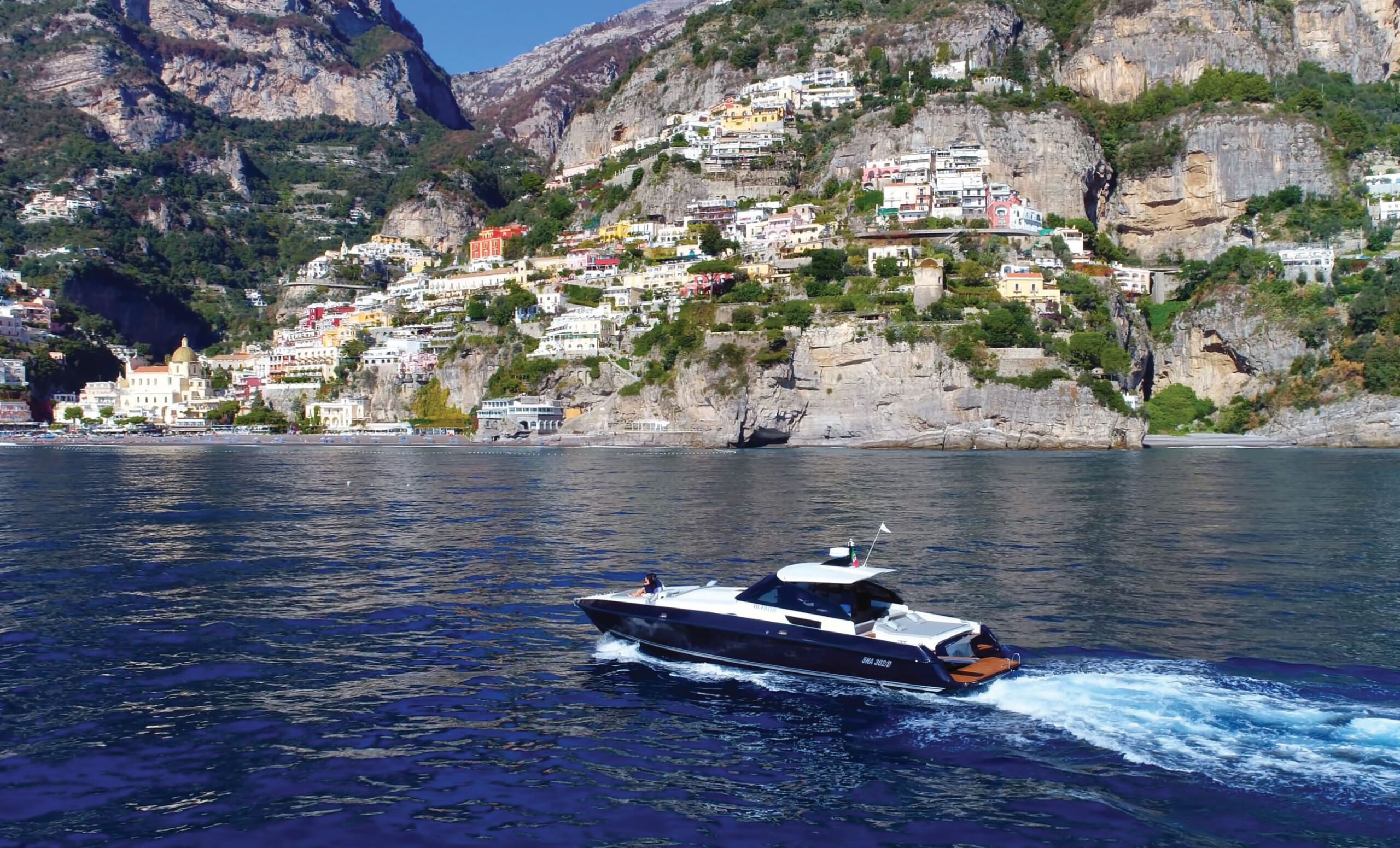
For all of the luxuries of Monte Carlo, the extravagance of Macau or the lifestyle of Miami, perhaps there is nowhere on the planet that has been a draw for the rich and powerful for as long as the island of Capri in Italy.
Located on the Bay of Naples, Capri has had a magnetic pull for millennia. From the ancient Greeks to Augustus, the first Roman emperor, the island has been a haven and idyllic escape throughout history, one which still draws visitors from around the globe for its unmatched beauty, luxury and romanticism. It also offers a rare combination of modern amenities on par with those found anywhere in Europe, with the antiquities, ruins and historical narrative sure to intrigue curious visitors to the island.
Of course, being Italian, the island has a world-class culinary scene, but there are plenty of extraordinary experiences to be had between these sumptuous meals. In fact,, there’s something for virtually every kind of luxury traveler on this idyllic island.
What to See in Capri
Perhaps the most iconic of Capri’s attractions is the world-renowned Blue Grotto. Most of the island of Capri is framed by steep cliffs rising from the ocean, pocketed with caves and grottos carved by centuries of ocean waves, but none are as jaw-dropping as the Grotta Azzurra. Named for the glowing blue water inside the grotto, the result of refracted sunlight within the cave being reflected off the white sand seafloor, the grotto is Capri’s most popular tourist destination, and thus can be quite crowded.
Nonetheless, it’s a must-visit due not only to its mesmerizing, otherworldly blue glow, but its history. Inside the grotto, visitors can supposedly still make out remnants of the quay built circa 30 AD by Roman emperor Tiberius as a shrine to water nymphs. Tides and rough ocean conditions can make access to the grotto difficult, but for those able to explore its interior, there’s likely no question what has made it a source of astonishment for visitors for over thousands of years. Be sure to plan ahead as high tide, or inclement weather, can close down the landmark as the entrance falls too close to the waterline.
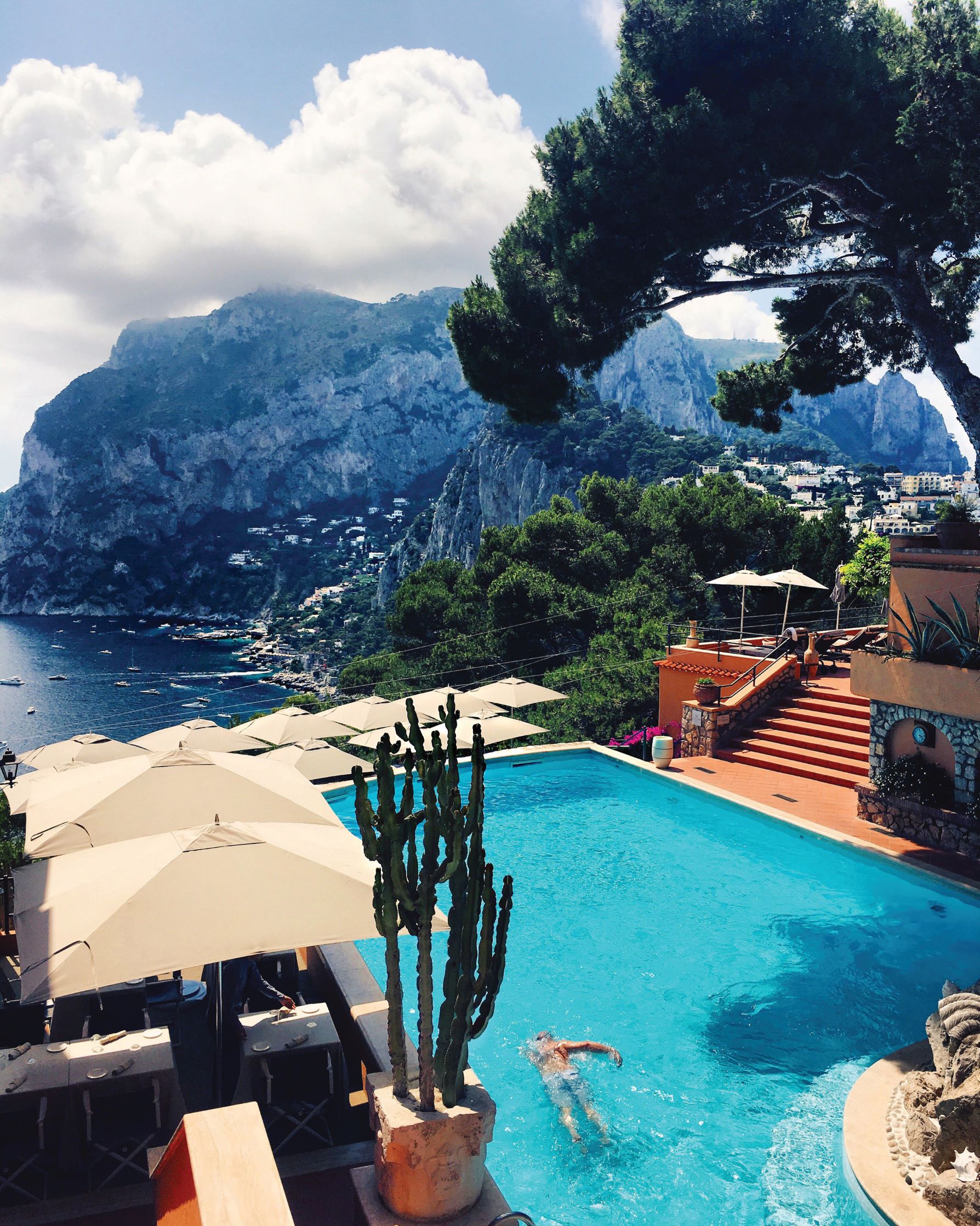
While the Blue Grotto’s reputation is well-deserved, don’t miss out on the countless other grottos, fissures and rock formations that form the perimeter of the island. Charter a boat for a luxurious tour around the island and let your adventurous side loose while exploring other fascinating sites like the Natural Arch, the Faraglioni rock formations, Green Grotto, White Grotto and the Punta Carena lighthouse. Each is a photographer’s dream, in addition to being a stunning backdrop for a relaxing day on the water.
Two mountains, Monte Solaro and Monte Tiberio, provide epic views of the surrounding coastline and are also mandatory experiences for any visitor to Capri. Monte Solaro, the highest peak on the island, can be hiked for those aerobically inclined, but most tourists choose the available chairlift to whisk them to the top of the 589-meter peak. Looking down from these heights, guests can fully appreciate not only the surrounding radiantly blue sea, but the rocks and green flora that make Capri one of the most verdant and beautiful natural landscapes in all of Italy.
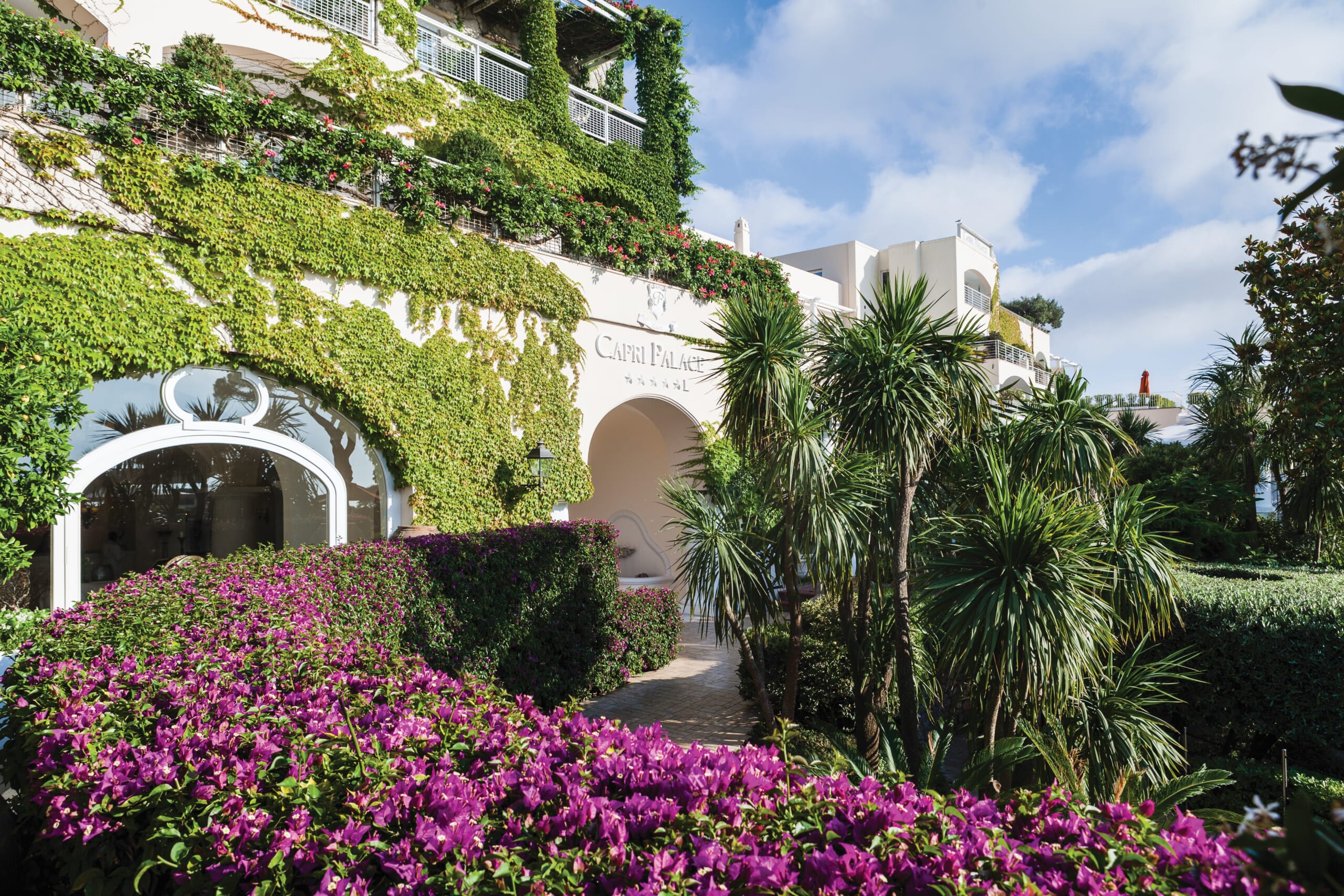
Of course, with its extensive history as a destination for the rich and powerful, there are an abundance of jaw-dropping villas and historical properties that have survived the years and provide a stunning immersion for both history aficionados as well as those who value the villa’s architectural and artistic magnificence. There are ancient ruins such as Villa Jovis, the largest of Emperor Tiberius’s 12 villas, and still offering wonderful insight into life and luxury in times of antiquity.
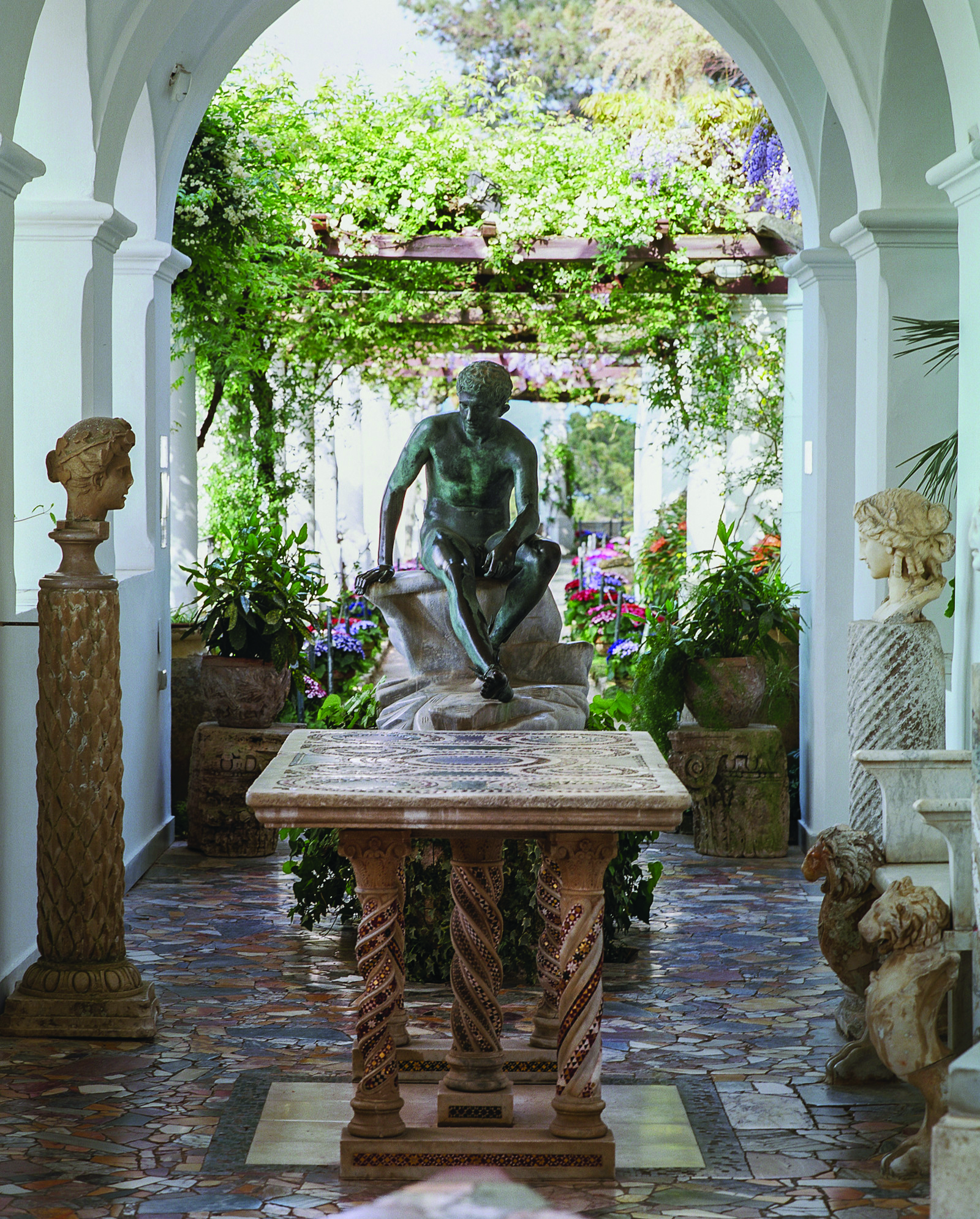
There are also more modern masterpieces, such as Villa Lysis with its Art Nouveau flourishes, and the 20th century Villa San Michele, each taking full advantage of the spectacular views and lush flora of the island. Or visit the Chiesa di San Michele Arcangelo, a baroque-style church built in the 18th century with a tiled floor depicting a scene featuring Adam and Eve, an artistic and religious creation that wouldn’t be out of place in Florence or Vatican City.
Where to Stay in Capri
Of course, being an island that for centuries has been renowned as a luxury escape, Capri has no shortage of world-class accommodations that will satisfy the demands of even the most scrupulous of guests. In April, Capri’s most famous hotel, the Capri Palace, is set to reopen under the auspices of Jumeirah Hotels and Resorts, the Dubai-based global luxury hospitality group.
Designed in the style of an eighteenth-century Neapolitan palazzo, with a distinctly Mediterranean flair, it was originally called the Europa Palace when it debuted in 1960. Renamed the Capri Palace in 1975, it soon became a mecca for contemporary art, dotted throughout the hotel and grounds, and renowned for its partially transparent pool which affords those walking through the hotel an underwater view of both swimmers its mosaics by Italian artist Velasco Vitali.
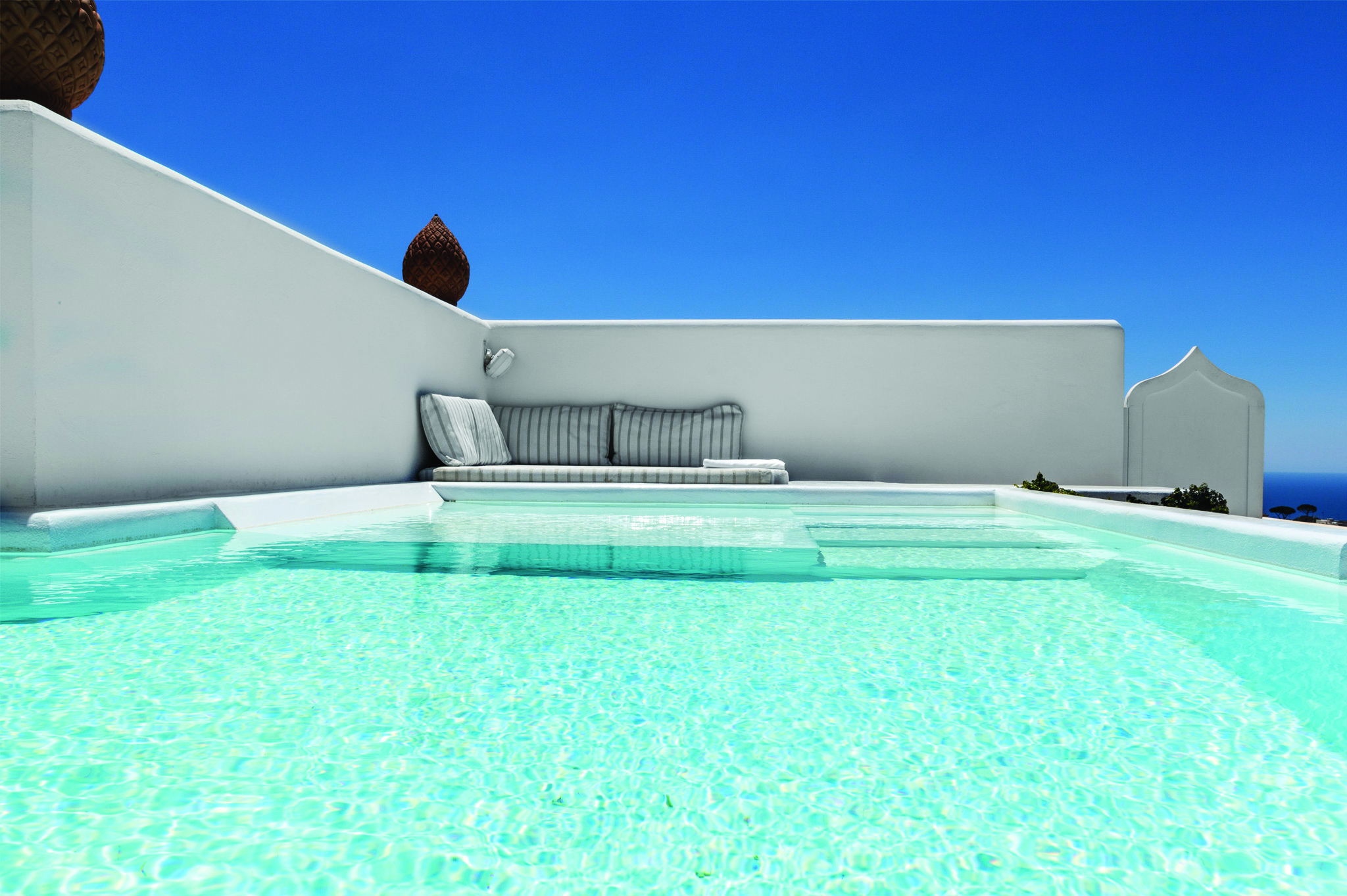
Where to Drink in Capri
Situated at the foot of Monte Solaro in the secluded town of Anacapri, it’s blessed with panoramic views of the Bay of Naples and Ischia. The posh retreat, which has now been rechristened Capri Palace, Jumeirah, features 68 impeccable guest rooms and suites; a private beach club, Il Riccio, with a Michelin-starred restaurant, the only one of its kind according to the property; the acclaimed L’Olivo restaurant, which is also Michelin-starred (it has two of them); the Bar degli Artisti, whose drink menu features 210 types of gin and 30 different tonic waters; and the aforementioned swimming pool set within manicured grounds. At Il Riccio you can select freshly caught sea urchins, lobsters, octopus and more at the fish counter and then watch the chefs prepare them in the open kitchen.
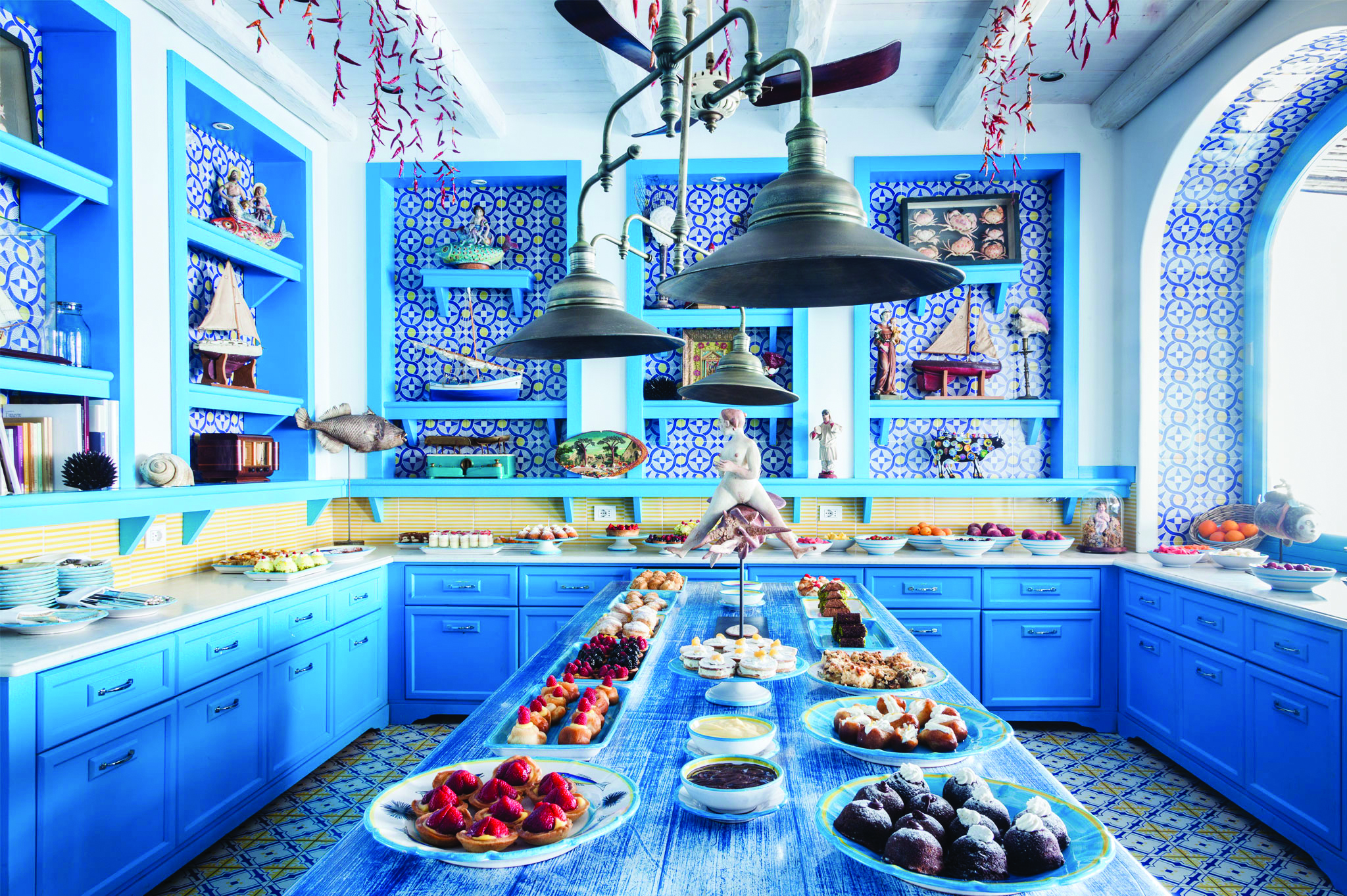
The property’s exclusive Capri Beauty Farm spa, with medical-grade facilities, is overseen by Professor Francesco Canonaco, an “international figure in the world of wellness,” the hotel states, and is home to the well-known Leg School that aims to improve circulation and lymphatic flow, as well as prevent cellulite and boost metabolism. Just the thing after all that Michelin-starred cuisine and rounds of G&Ts.
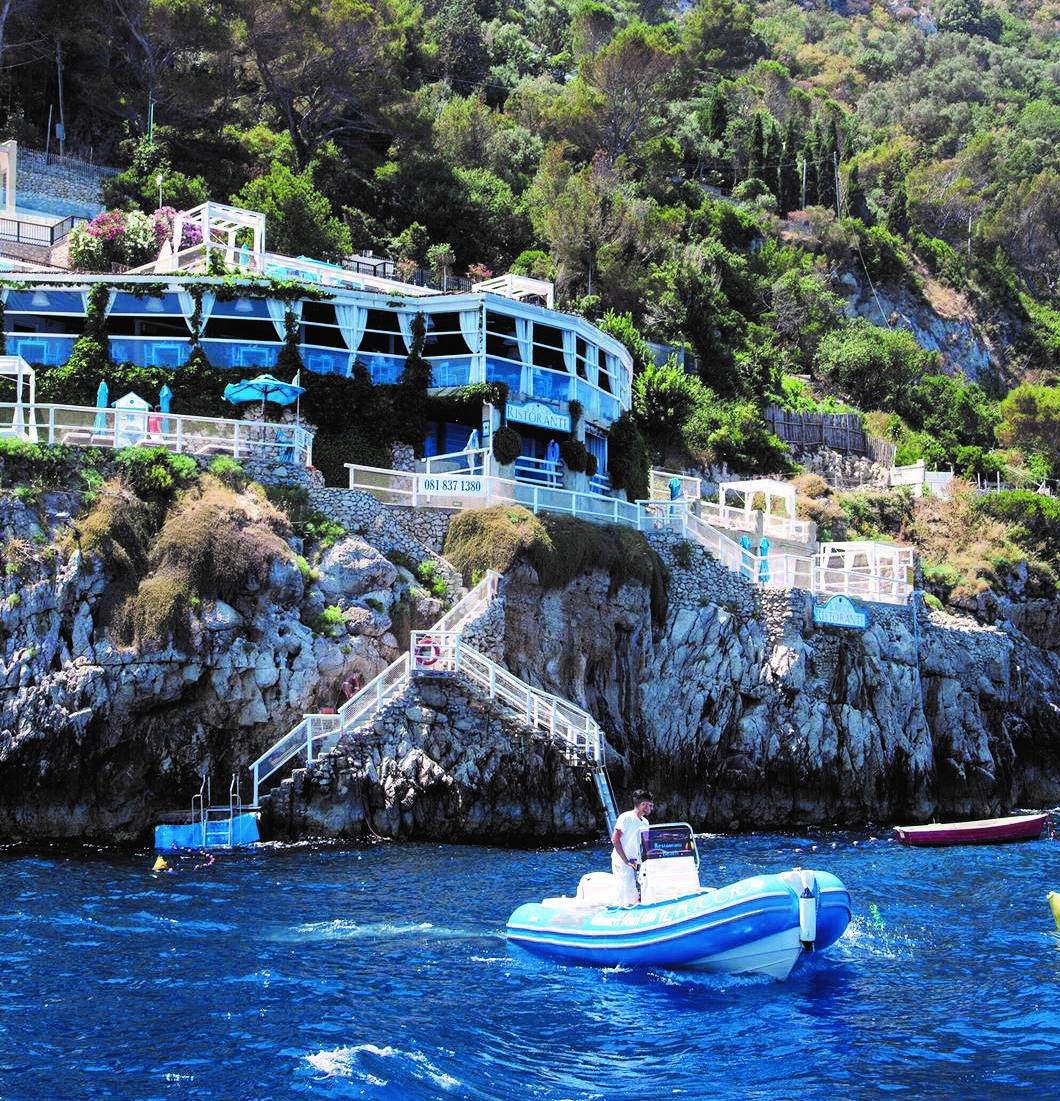
Also atop many lists sits the J.K. Place Capri, a property where no detail has been overlooked and the design and décor are unrivaled. Those fortunate enough to secure one of the hotel’s 22 rooms will find themselves ensconced in extreme luxury and comfort, while the hotel’s JKitchen is one of the most celebrated restaurants on the island, specializing in refined versions of traditional Mediterranean cuisine.
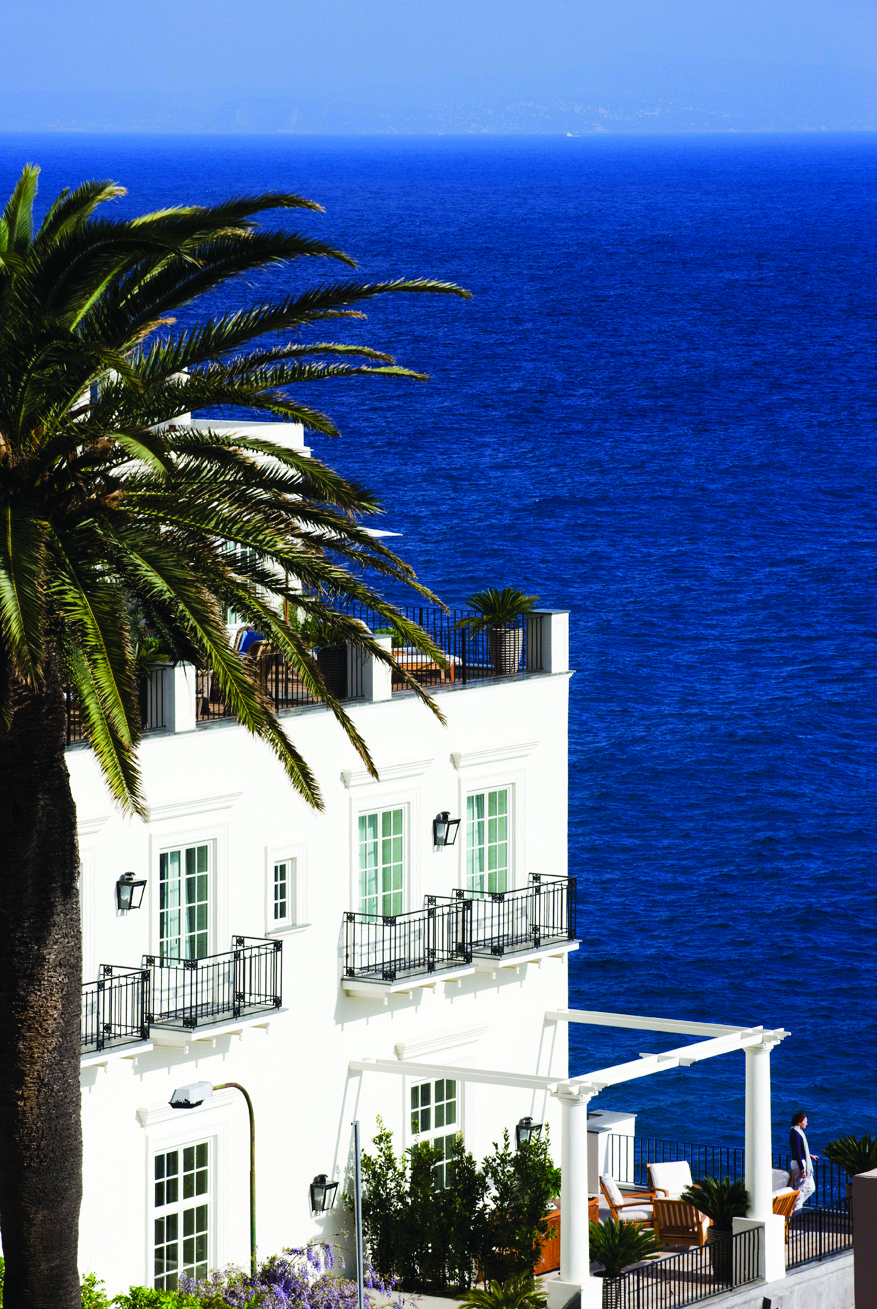
Perched high overlooking the Faraglioni rock formations, a former private villa turned five-star hotel, Punta Tragara provides jaw-dropping vistas in all directions. With the Tyrrhenian Sea expanding out to the horizon, guests can indulge themselves in the luxury and beauty that encouraged American armed forces to use the property during World War II. In fact, the room you stay in may very well have been used by General Eisenhower or Sir Winston Churchill while they helped oversee the Allied campaigns in Italy.
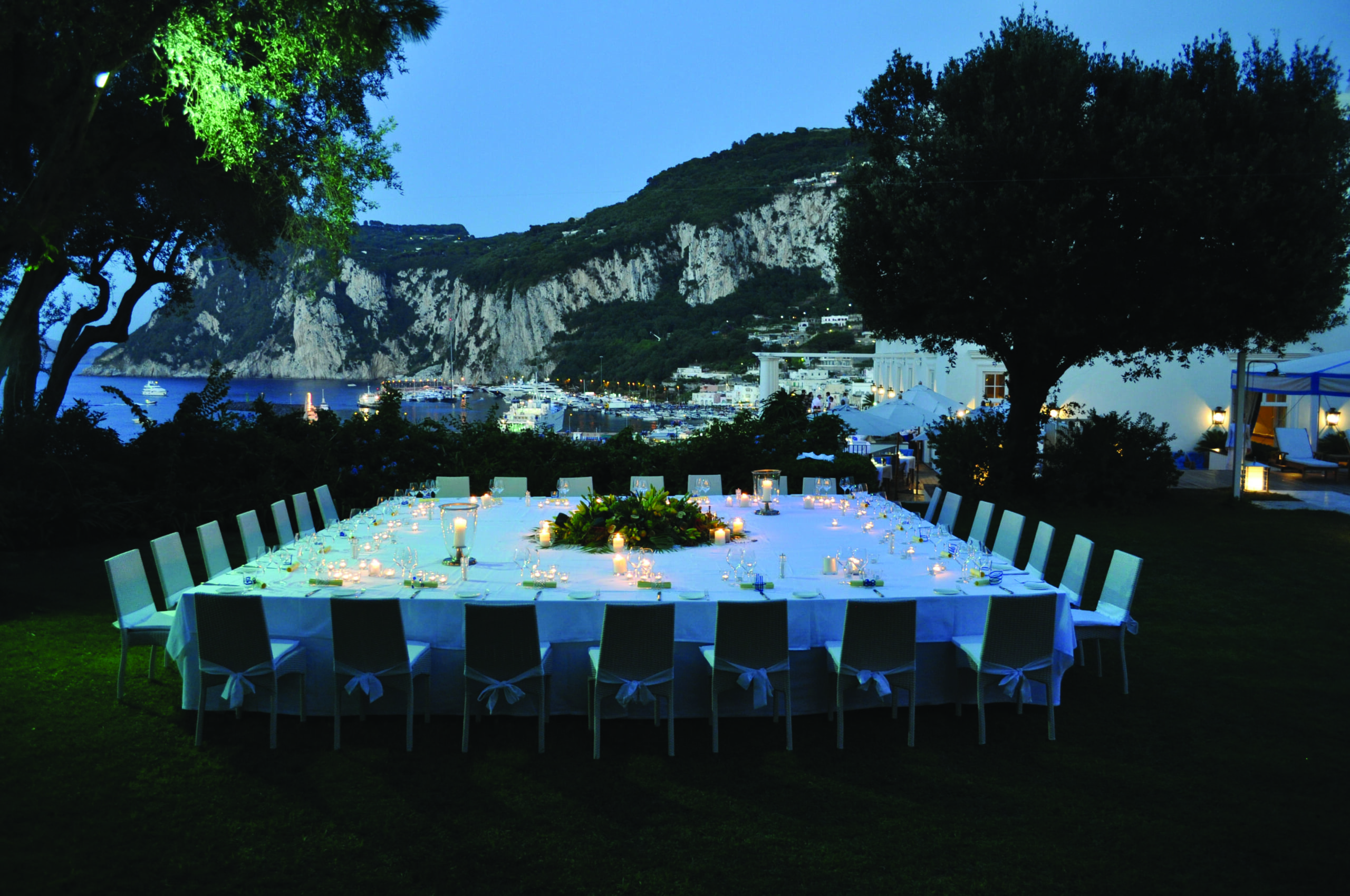
Where to Eat in Capri
The hotel also is the home of Le Monzù Restaurant. The establishment is named in honor of the great French-influenced chefs who worked for Neapolitan aristocratic families between the 13th and 19th centuries (“monzù” is a play on the oft-mispronounced “monsieur”). Historic dishes are given the finest modern treatment, as the traditional Caprese and Neapolitian culinary traditions are preserved and even elevated by Executive Chef Luigi Lionetti and his team. With mesmerizing views of Capri, the rock formations and the surrounding blue sea, it is a fittingly incredible setting befitting the world-class offerings that emerge from the kitchen.
https://www.instagram.com/p/BuMUiqPggB2
The Caesar Augustus hotel, built on a cliff’s edge 300 meters above the sea on the slopes of Monte Solaro, provides a similar level of luxury but with a slightly more relaxed vibe. Views of the Amalfi Coast and the Bay of Naples are extraordinary, and at Chef Eduardo Vuolo’s sublime Restaurant La Terrazza di Lucullo, diners can enjoy a regional menu focused on the freshest and most local of ingredients.
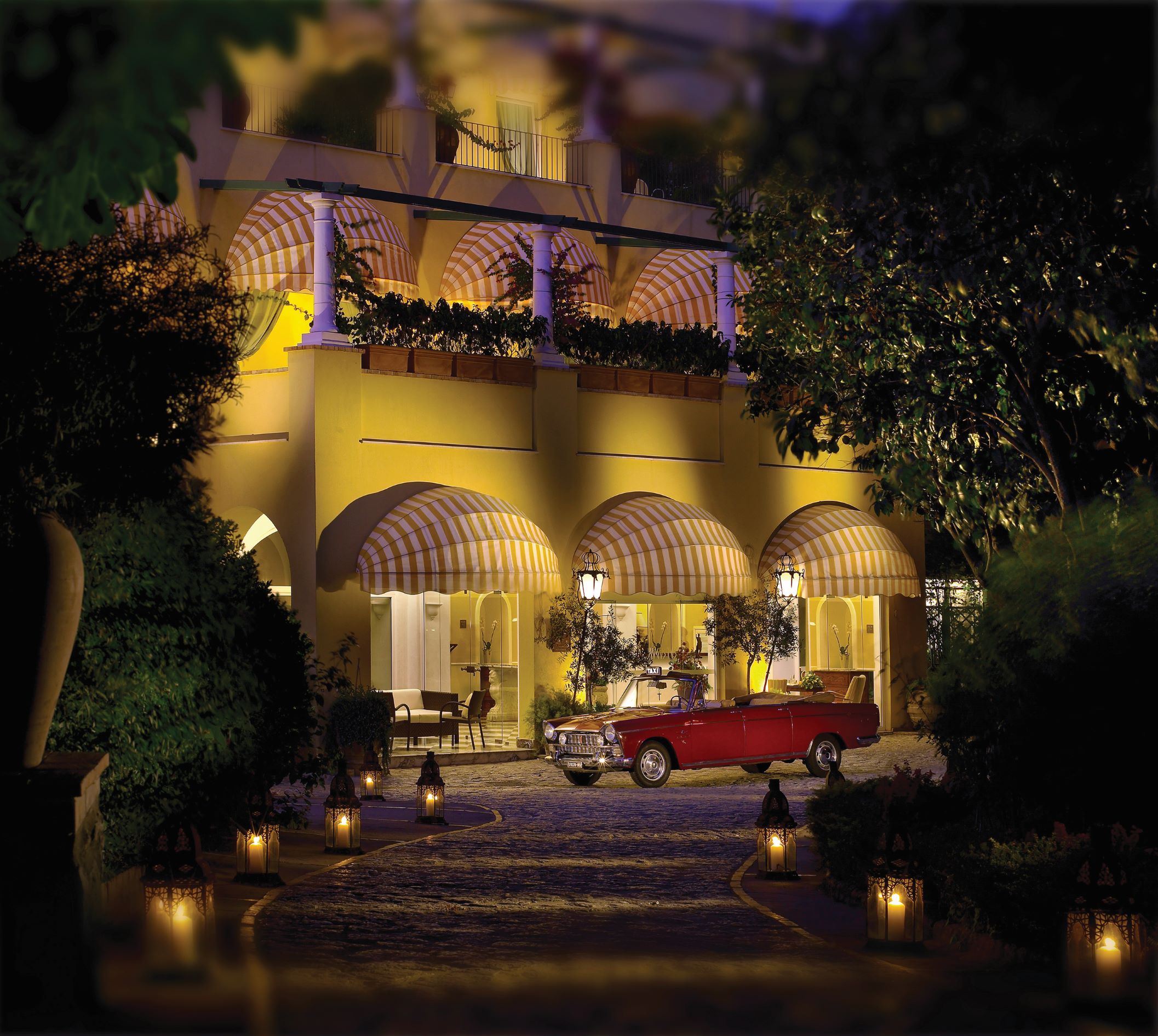
We recommend reserving one of the chef’s tables that provide intimacy for the most romantic of evenings. For those looking for dining excellence outside of these elite hotel properties, foodies and other visitors can try standout options like Mammà, another Michelin-starred recommendation, which brings a new level of refinement and quality to traditional Mediterranean offerings, in addition to favorite selections from Naples.
